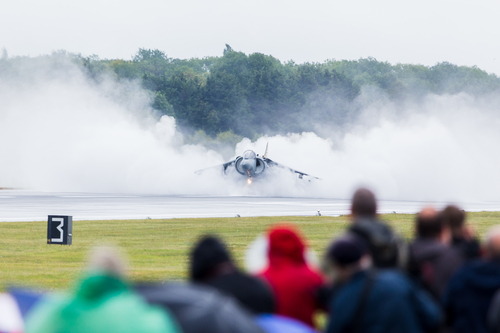
The AV-8B Harrier jet, a mainstay in U.S. Marine Corps aviation for nearly 40 years, is set to take its final bow. Renowned for its vertical takeoff and landing capability, the Harrier has etched its name into military history through decades of service in various conflicts.

Now, as the Corps transitions the last of its Harrier pilots to the more modern F-35B, the Harrier’s legacy looms large, marking the end of an era.

The significance of the Harrier’s approaching retirement was underscored in April when the Marine Corps’ last two Harrier pilots earned their wings. The Harrier community is feeling a blend of nostalgia and pride as their aircraft’s tenure nears its conclusion.

“It is the beginning of the end for us as a community,” shared Capt. Joshua Corbett, one of the last Harrier pilots. Emphasizing the sentimental value the jet holds, he added, “All good things have to come to an end, and it’s our turn soon, but not yet.”

The Harrier has demonstrated unmatched versatility and adaptability since it first took to the skies in support of Marine operations. The aircraft saw action in the Gulf War where its role was crucial despite mixed reviews on its performance.

Retired Lt. Col. Theodore Herman defended the Harrier’s record, highlighting that the jet executed missions without requiring aerial refueling, which was central to its design for battlefield proximity.

The jump jet also had a significant impact in the early days of Operation Iraqi Freedom, transforming amphibious ships into “Harrier Carriers” and magnifying the power of Marine Expeditionary Units.

It was noted that Harrier squadrons launched from such ships spent more than 250 tons of ordnances and impacted roughly 1,200 targets, underscoring the Harrier’s pivotal role in the campaign.

The Harrier’s influence extended beyond military operations, capturing the public’s imagination with a cameo in a Pepsi commercial that led to an amusing legal challenge over the advertised “7,000,000 Pepsi Points” supposedly redeemable for a Harrier. The lawsuit that ensued became a footnote in the jet’s storied career.

Even as it approaches retirement, the Harrier is not done adapting. Recently, Harriers have been modified to counter the drone threats in the Red Sea posed by Houthi rebels, with at least one Harrier equipped with air defense missiles. Despite its iconic loud engine and lack of stealth, the Harrier has shown that it can take on new challenges.

The AV-8B’s British counterpart, the Sea Harrier, boasts an impressive record as well, particularly in the Falklands War with a 23:0 air-to-air kill ratio. The Sea Harrier has similarly earned its place in military aviation history, along with the respect and admiration of those who flew it.

The tenacity and resilience of the Harrier were also highlighted in an incident involving a pilot’s skillful vertical landing on a stool aboard a Navy ship after his jet’s front landing gear failed.

Such daring feats of aviation are part of the lore that surrounds the Harrier, further cementing its role as a marvel of military engineering.

As the Marine Corps looks ahead to September 2026, when the final two Harrier squadrons will complete their transition to the F-35B, it’s clear that the Harrier has more than earned its place in the annals of military history.

While its loud engines may soon fall silent, the legacy of the Harrier will continue to inspire with tales of ingenuity, bravery, and the relentless pursuit of aerial excellence.
